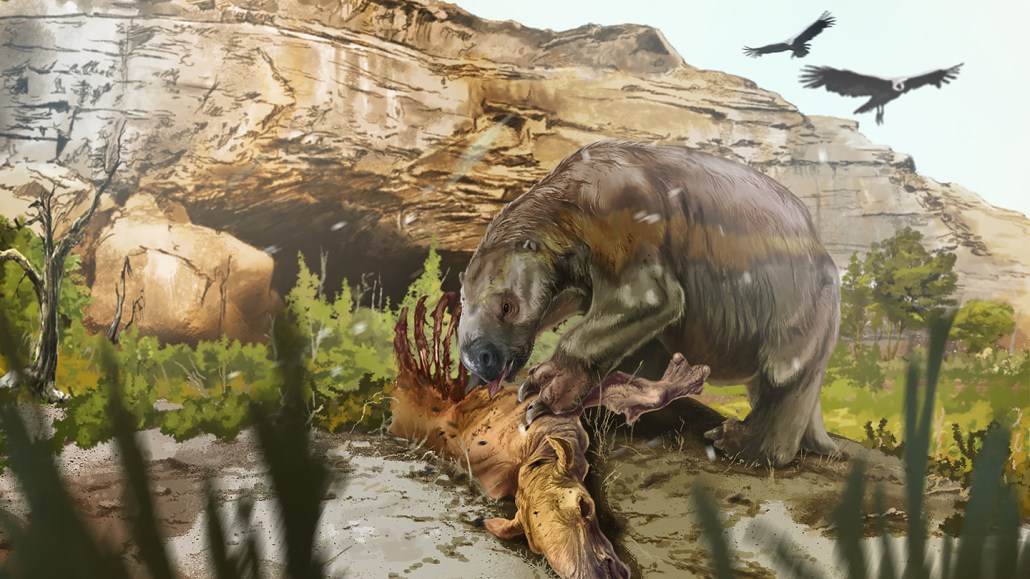
Some 12,000 years ago, the giant ground sloth Mylodon darwinii might have stopped outside Chile’s Mylodon Cave to take a few bites out of the carcass of a llamalike Macrauchenia, as shown in this artist’s rendition.
Jorge Blanco

Some 12,000 years ago, the giant ground sloth Mylodon darwinii might have stopped outside Chile’s Mylodon Cave to take a few bites out of the carcass of a llamalike Macrauchenia, as shown in this artist’s rendition.
Jorge Blanco